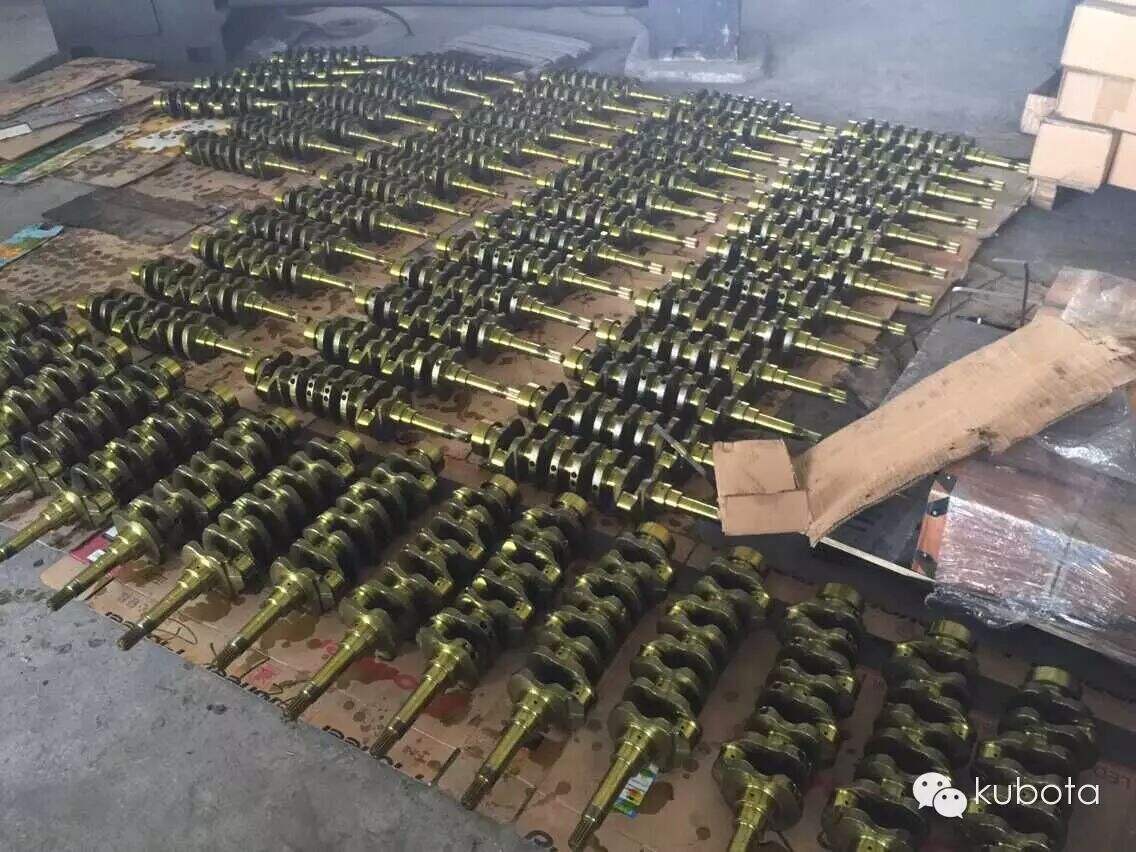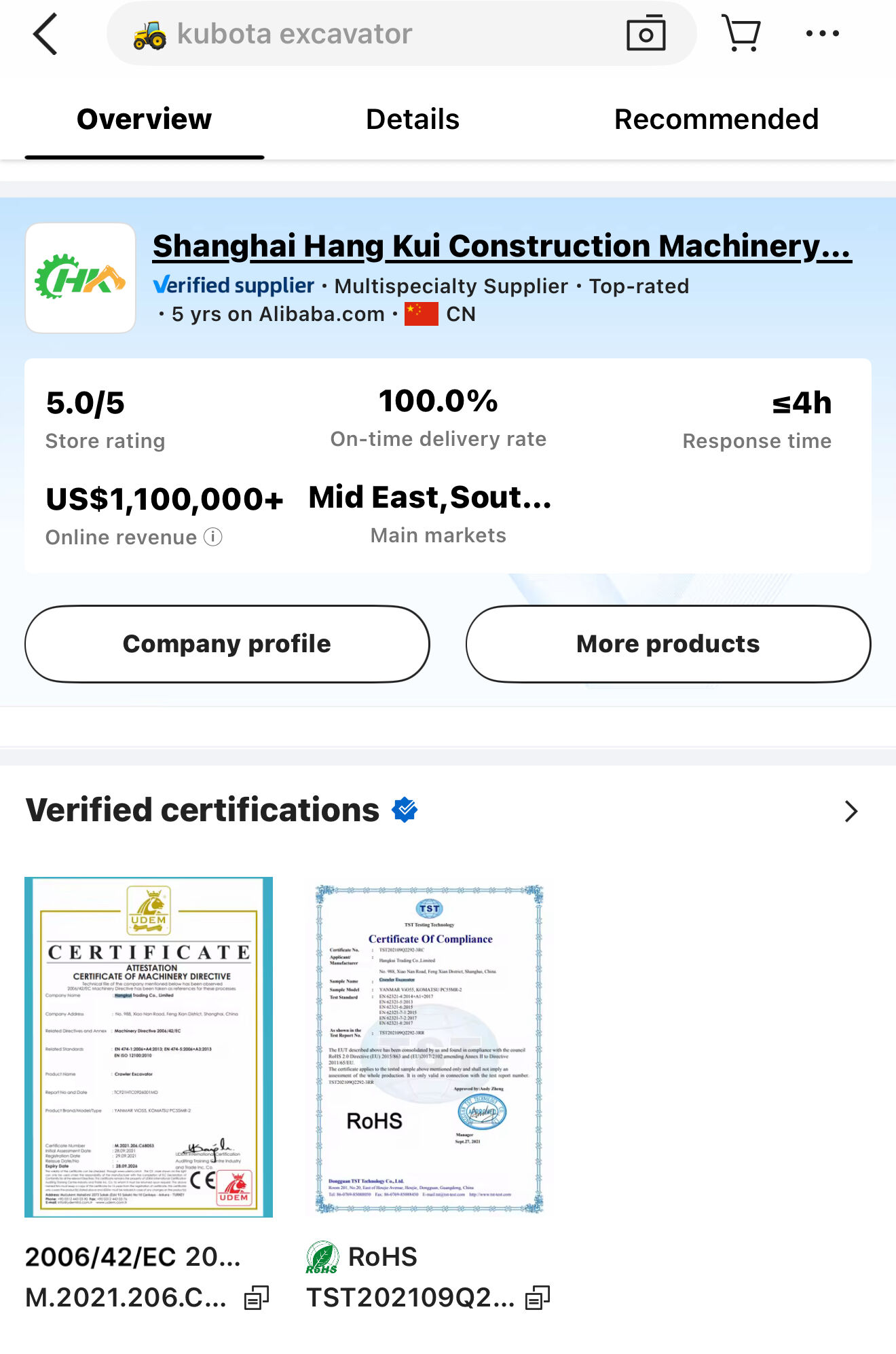The causes of black smoke, white smoke, and blue smoke from Kubota excavators are analyzed and solved!
The causes of black smoke, white smoke, and blue smoke from Kubota excavators are analyzed and solved!

Kubota excavator black smoke white smoke cause analysis and solution of blue smoke

When the engine of the Kubota excavator works, the fuel is burned in the cylinder and produces exhaust gases outside the engine. When the engine is working properly and the fuel is completely burned, the exhaust gas mainly contains water vapor (H2O), carbon dioxide (CO2) and nitrogen (N2), and the exhaust gas is generally light gray. When the fuel is not fully burned or the engine is not working properly, harmful substances such as hydrocarbons (HC), carbon monoxide (CO), nitrogen oxides (NOx) and carbon particles are present in the exhaust gas, giving the exhaust a white, black or blue color. It can be seen that the color of the engine exhaust reflects the state of the fuel combustion and the technical state of the engine. As a result, an Kubota excavator driver or Kubota engine maintenance person can determine the technical condition of an engine by the color of its exhaust.
I. The exhaust fumes are black

The black smoke in the exhaust is mainly carbon particles that are not fully burned. Therefore, the fuel supply system of excessive fuel supply, gas admittance system to reduce the volume of air, cylinder block, cylinder head and piston composition of the combustion chamber of poor sealing, injector injection quality and other factors will be incomplete combustion of fuel, so that the exhaust smoke. There are the following main reasons for black smoke in exhaust:
1. The supply of oil to the high pressure pump is too large or the supply of fuel to the cylinders is not even.
2. The valve seal is not tight, causing leakage, and the cylinder compression pressure is low.
(3) The air filter's inlet passage is blocked and the inlet resistance is large, making the inlet volume insufficient.
4 Valve casings, pistons, and piston rings are severely worn
5. The oil sprayer does not work well
6. The engine is operating at overload
7, fuel injection pump advance angle is too small, after the burning process moved to the exhaust process
8 failure of gasoline electric injection system control, etc.
For black smoke-bearing engines, they can be inspected and eliminated through high pressure pump adjustment, injection test inspection, cylinder compression pressure measurement, inlet cleaning, early adjustment of fuel supply angles, and fault diagnosis of the electric injection system.
II. White smoke in the exhaust

The white smoke in the exhaust is mainly fuel particles or water vapor that are not sufficiently vaporized and burned, so everything that causes the fuel to fail to vaporize or the water to enter the cylinder will cause the exhaust to smoke. This is summarized for the following main reasons:
(1) The temperature is low and the cylinder pressure is insufficient, and the fuel vaporization is not good, especially the exhaust gas is white smoke early in the cold start.
2. The cushion is damaged and the cooling water seeps into the cylinder
3. The cylinder cracks and the cooling water penetrates into the cylinder
4. The amount of water in the fuel is high
White smoke rises in the exhaust when the engine starts cold, and the disappearance of the white smoke after the engine heats should be considered normal. If the vehicle still emits white smoke when it is normally running, it is a fault, and it should be examined and analyzed by observing whether the cooling water in the water tank is not consumed normally, whether the cylinders are working normally, and whether the oil and water separator has too much water.
III. Blue smoke in the exhaust

The blue smoke in the exhaust is mainly the result of excessive oil entering the combustion chamber to participate in combustion. Therefore, whatever causes the oil to escape into the combustion chamber will cause blue smoke to escape the exhaust. This is summarized for the following main reasons:
1. The piston ring breaks
(2) The oil ring's top oil pore is blocked by carbon deposits and loses its lubrication effect.
3. The piston ring opening turns together, causing oil to run from the piston rings opening.
(4) The piston ring is severely worn or is stuck in the groove by accretion of carbon and loses its sealing effect.
5. Reverse the air ring in the up and down direction and sweep the oil into the cylinder to burn off
6. The piston ring has insufficient elasticity and is of substandard quality
7. The valve catheter oil is improperly encapsulated or aging, fails, and loses its sealing effect.
8 pistons and cylinders are severely worn
9. The oil is added too much, so that the oil splatters too much, and the oil ring does not have time to shave off the excess oil in the cylinder wall.
Blue smoke in the exhaust must be accompanied by an increase in oil consumption, which some drivers call "burning oil." The oil-fuel consumption ratio is generally 0.5% to 0.8%, and blue smoke will be generated in the exhaust when the oil consumption exceeds this value. The failure of blue smoke in the engine generally involves dismantling and inspecting the engine, so as to find the cause and determine the solution for the fault.
--- Above is the Kubota excavator and Kubota engine black smoke smoke white smoke blue smoke cause analysis and solution , Please study and reference ;
--- After reading this article, if it is useful to you, please like it, collect it and transfer it。Thank you
--- The use of the machine lies in maintenanceIt needs rest and energy as much as we humans do!!! It needs us to carefully take care of every part of it! --- Shanghai Hangkui Construction Machinery Co.Ltd specializes in wholesale sales of all series of Japanese Kubota machinery and equipment parts for repair, consultation, information, technical support, experience sharing, communication, after-sales service!



 EN
EN








































 ONLINE
ONLINE